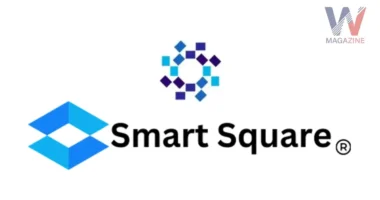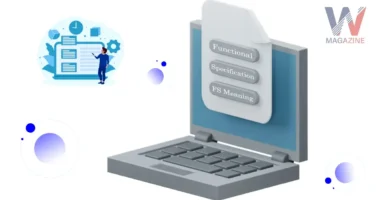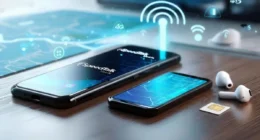Table of Contents
When you record sound, watch a video, or measure sensor data, everything starts as continuous, analog signals that change smoothly over time. Digital signal processing is the science of converting those smooth, real-world waves into numbers that computers can understand, and then working magic on them: cleaning them up, compressing them, analyzing them, or extracting useful details.
How is Digital Signal Processing (DSP) made up?
Digital Signal Processing (DSP) is made up of a combination of hardware, software, and mathematical techniques designed to process signals (like sound, images, or sensor data) using digital methods. Here’s how it’s built up, step by step:
1. Input Signals (Raw Data)
Everything starts with an analog signal, like sound from a microphone or light captured by a camera. DSP systems work by converting these analog signals into digital form using:
- Sensors (e.g., microphone, camera, ECG leads).
- Analog-to-Digital Converters (ADC).
2. Core Components of DSP
Digital Signal Processor (Hardware Chip)
A specialized microchip optimized for high-speed numeric calculations. It performs tasks like:
- Multiplication and addition (very fast)
- Filtering
- FFTs (Fast Fourier Transforms)
- Modulation and demodulation
Examples: Texas Instruments TMS320, Analog Devices SHARC
DSP Software / Algorithms
Software is what actually tells the hardware what to do. Common operations include:
- Noise reduction.
- Signal filtering.
- Compression and decompression.
- Feature extraction (e.g., frequency detection).
Languages used: C, Python, MATLAB, and sometimes assembly for performance.
3. Mathematical Foundations
DSP is built on math, especially:
- Linear algebra.
- Calculus.
- Fourier transform.
- Z-transform.
- Probability and statistics (for adaptive filters, ML, etc.).
These are used to manipulate the digital signals intelligently.
4. Processing Steps in DSP
- Sampling: Taking regular digital “snapshots” of an analog signal.
- Quantization: Rounding values to digital levels.
- Encoding: Converting to binary.
- Filtering/Transforming: Changing the signal to get useful results.
- Output: Through DAC (Digital-to-Analog Converter) or data transmission.
From Analog Waves to Digital Numbers
The first step in digital signal processing is converting analog signals to digital form. This happens in three stages:
- Sampling: We measure the analog signal at regular time intervals to get snapshots. This turns a smooth wave into a sequence of numbers.
- Quantization: Each snapshot is rounded to the nearest digital value. More bits = finer detail, but also more data.
- Encoding: Finally, we represent each rounded value in binary so computers can process it.
Once sampled and quantized, the continuous wave becomes a stream of discrete numbers.
Why Do We Sample That Way?
A key rule in digital signals processing is the Nyquist theorem: to accurately capture a wave, you must sample at twice its highest frequency. Otherwise, you’ll get aliasing, weird distortions that play back incorrectly.
Imagine sampling a song at a low rate: high notes might shift to lower pitches, ruining the sound. Nyquist ensures that it doesn’t happen.
How do We Change Signals?
Once in digital form, we can apply all sorts of tools to improve or extract information:
- Filters: These let us remove unwanted noise or boost certain frequencies. There are two common types:
o FIR (Finite Impulse Response) filters: Precise and stable.
o IIR (Infinite Impulse Response) filters: Efficient and fast. - Transforms: To see what frequencies make up the signal, we use the Discrete Fourier Transform (DFT) and its fast cousin FFT. They reveal a signal’s frequency makeup.
- Downsampling / Upsampling: Changing sample rates lets us reduce file size or match different systems.
- Modulation / Demodulation: In communications, we encode data onto waves and decode it again using DSP techniques.
These tools help clean, compress, and transform signals in powerful ways.
Types of DSP Systems
- Software DSP: Runs on general-purpose or embedded microprocessors.
- Hardware DSP: Uses specialized chips (DSP processors) designed for fast operations like multiply-adds.
DSP systems are everywhere, from phone apps to sensors and mission-critical radar.
Real-World Applications
Digital signals processing touches nearly every modern device:
- Audio & Speech: Noise reduction, compression (MP3, AAC), voice control, and autotune.
- Image & Video: Blur removal, contrast boost, face recognition, video streaming.
- Telecommunications: Modems, 5G, satellite comms, using DSP for encoding, decoding, error correction, equalization.
- Radar & Sonar: DSP enables object detection, ranging, and target tracking.
- Medical Devices: ECG, MRI, and ultrasound images all use DSP to filter noise and improve clarity.
- IoT & Sensors: Smart thermostats, wearables, and environmental sensors rely on filtering and feature extraction.
Strengths of Digital vs. Analog
Digital signals processing offers several big advantages:
- Less noise: Digital values resist interference and distortion.
- Error correction: We can detect and fix mistakes unseen in analog.
- Ease of storage & transmission: Digital files are compact, secure, and portable.
- Flexible and reusable: Update filtering or compression with software changes, not new hardware.
- Scalable across frequencies: Handles signals from audio to seismic without extra circuitry.
Where DSP Meets Cutting Edge Tech?
- Machine Learning & Deep Learning: DSP extracts features (like MFCCs in speech) used in AI models for recognition and classification.
- Edge & IoT Systems: Low-power DSP in microcontrollers lets sensors act intelligently in the field.
- 5G & Wireless: Beamforming, equalization, and modulation schemes depend on real-time DSP.
How to Learn DSP?
Start simple and build up:
- Understand math: signals, systems, Fourier analysis, Z-transforms.
- Practice coding basics: Python with libraries like scipy.signal, or MATLAB/Simulink.
- Explore small projects: noise filters, speech recognizers, audio effects (reverb/echo cancel).
Try hands-on hardware or simulation with microcontrollers or software-defined radios.
Conclusion
Digital signals processing means turning waves into numbers and shaping them with code. From better sound quality to real-time image filters, DSP is the hidden hero in today’s tech. It’s cheaper, smarter, more flexible, and essential for anything from phones to medical gear. Getting started may seem math-heavy, but practical tools like FFT, filtering, and sampling unlock a wide world, from AI to IoT. If you’ve ever adjusted bass/treble or used voice assistants, you’ve already benefited from DSP magic.
Related Topic: Electronic Data Processing Meaning & Key Components









